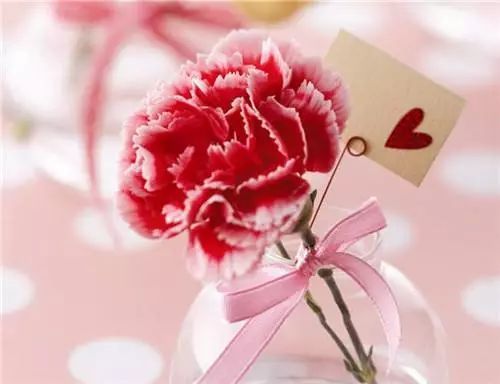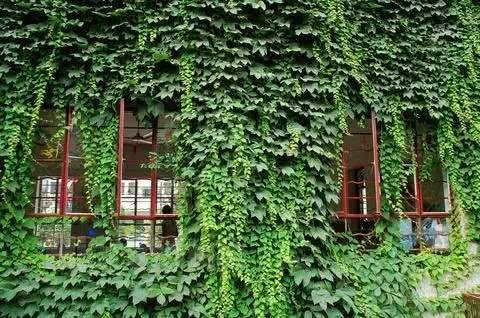Maybe you don't know what Qixi Festival gave you? Plant carnations with your loved ones.

Brain craftsmanship
You have 40 friends who follow the official account!
A bouquet of flowers is always popular with girls, but isn't it too thin to send flowers only for anniversaries or holidays? So learning how to maintain and being a florist is an excuse to have more contact in the future! I'm going to rely on carnations for this festival!
Carnation is also known as carnation. It is a perennial semi-woody herb and is usually cultivated biennial. Flowering all the year round in greenhouse, capsule cylindrical.
So how are carnations raised? Is there any good method in breeding? What matters do you need to pay attention to in breeding carnations? Please read on with the master with your questions.
The Culture method of Carnation
The best breeding time: from late January to early February, the effect is the best to avoid the hot July and August. Autumn is also fine.
The best growth soil: carnations are herbaceous flowers with whisker roots, and their roots like to grow in loose, fertile, well-ventilated soil or medium. The best soil for growing carnations is sandy loam.
Growth humidity requirements: keep the soil with a certain amount of moisture, not too dry or too wet.
The best growth temperature: Carnation is a cool plant, the optimum temperature for growth and development is 19: 21 ℃, and the temperature difference between day and night should be kept within 10 ℃.
The best growth light: the longer the sunshine accumulates, the more it can promote the flower bud differentiation, and then blossom earlier, improve the flowering uniformity and cut flower yield.
Matters needing attention in culturing carnations
Application of fertilizer: Carnation is a shallow root plant, the root system is mainly distributed in the 20 cm soil layer. A sufficient amount of base fertilizer should be applied during cultivation. Base fertilizer uses organic manure such as stable manure, compost and bone meal to improve the physical properties and enhance the fertility of the cultivated soil, making it a humus-rich, easy and fertile loam. The base fertilizer can only be used after composting and ripening.
Watering points: carnations are shallow-rooted flowers, the planting depth should not exceed 2 cm, water once after planting, and then water when the potted soil is dry. Carnation is not resistant to moisture, in addition to increasing the amount of water in the vigorous growth period, flowering period and midsummer, generally watering should not be too much, just keep the soil moist. Avoid too dry and wet soil during flowering.
Pruning tips: don't be careful not to let a flower grow too high, or the nutrition will be wasted on the growth, which is bad for other flowers. So when the branches and leaves are too high, pinch the top in time.
Pot soil replacement: soil or medium is the place where plant roots are active. It is very important for carnation cultivation to create a loose and breathable rhizosphere environment with a certain ability to preserve fertilizer and water. Soil ventilation gap accounts for about 30% of the most ideal, viscous and silted soil is not conducive to the growth of carnations, it needs to be improved, its core is to coordinate the relationship between solid, liquid and gas in the soil.
Main points of reproduction: sowing reproduction is mainly used for cross breeding, or to produce potted flowers with hybrid seeds of the first generation. The suitable temperature for transplanting is 18-20 ℃, germination in 1 week and seedling in 2-3 months. Tissue culture and propagation is an important means to produce virus-free seedlings, which is widely used in cut flower production. Generally, the stem tip is used for detoxification culture, and then a large number of propagation.
Pest control: leaf spot disease: the disease starts from the lower leaves, the disease spot is round, oval, irregular, with a diameter of 4mi 5mm, sunken reddish brown and gradually turning grayish white. In severe cases, the disease produces a black mildew layer (conidia), and the leaves are withered and drooping, but do not fall off. Branch blight occurs when the disease spot grows on the stem and is girdled. When the bud is infected, there are round spots on the bud and a black mildew layer, and disease spots on the branches, causing the bud to die. Prevention and control methods: spraying 1Rule 100 Bordeaux solution for 5 times, the effect is obvious, spraying 1000 times of Dysenamine also has a certain effect; increase the application of phosphorus and potassium fertilizer to enhance disease resistance.
Carnation hydroponic culture
1. Remove the leaves that are ready to be inserted into the water, cut the base obliquely and insert them into the water. Keep good ventilation between the flowers and branches.
2. Water-raised carnations must not spray water on flowers to avoid festering.
3. Be sensitive to ethylene, so stay away from overripe fruits and vegetables, smoke, incense, etc., and it is better to add anti-ethylene antistaling agent to the water.
4. if you want to open early, you can re-cut the flower stem and insert it into the warm water fresh-keeping solution.
Carnation soil culture
It is best to choose rice root mud to turn the soil depth to 20cm in December, turn it again at the end of January and the beginning of February, and apply the base handle, but only one kind of soil can be applied. Apply 100 jin of cake fertilizer or bone meal per mu, or appropriate amount of calcium superphosphate. The border will be made in March, with a width of 1 meter, a width of 60 centimeters and a depth of 35 centimeters, in order to facilitate drainage.
Generally, the seedlings planted in January were planted at the end of April, and those in February were planted at the beginning of May. The moisture of the seedling bed should be controlled 4-5 days before planting, and the seedlings should be watered once the day before, and the seedlings should be dug up with soil on the second day. The planting distance is about four rows, and the plant distance is about 18 cm. Planting should not be too deep, and water should be watered thoroughly after planting.
The experience of cultivating carnations
1. In general, when "Frosts Descent" enters the greenhouse before and after, the most suitable temperature control is 10-20 ℃. In order to prolong the florescence, the temperature can be increased or lowered appropriately. Efforts should be made to reduce the humidity in the greenhouse in order to reduce the occurrence of diseases.
2. Coring should be carried out once or twice at seedling stage to promote branching, so that each plant has about 10 lateral branches. After picking the heart, the plant is graceful and blossoms. With the growth of branches, brackets should also be set up to prevent lodging. During the growth period, the lateral buds and small flower buds produced on each branch should be removed in time, and only one flower bud at the top of each branch should be retained, so that nutrients can be supplied to the top bud.
Everything is wonderful, there is a praise mall in the flower school.
There are flowers and love, a school of flowers
- Prev

A tourist attraction worth visiting-- the scene of "A good play"
Brainstorm you have 40 friends to follow the official account! Huang Bo's "A good play" has been a hit at the box office since its release. This is not only a comedy, but also a desert island survival drama. The film is set on an isolated island.
- Next

The independent kingdom of climbing plants
Brainstorm you have 40 friends to follow the official account! If you want to build a flower wall, you can consider planting some-climbing plants, or climbing vines, climbing plants, that is, generally speaking, the stem is slender and cannot stand upright, but must climb the support upward.
Related
- Wuhan Hospital Iron Tree Blooming Result Was Instantly Frightened by the Gardener Master
- Which variety of camellia is the most fragrant and best? Which one do you like best?
- What is the small blue coat, the breeding methods and matters needing attention of the succulent plant
- Dormancy time and maintenance management of succulent plants during dormancy
- Minas succulent how to raise, Minas succulent plant pictures
- What are the varieties of winter succulent plants
- How to raise succulent plants in twelve rolls? let's take a look at some experience of breeding twelve rolls.
- Attention should be paid to water control for succulent plants during dormant period (winter and summer)
- Watering experience of twelve rolls of succulent plants
- Techniques for fertilizing succulent plants. An article will let you know how to fertilize succulent plants.

